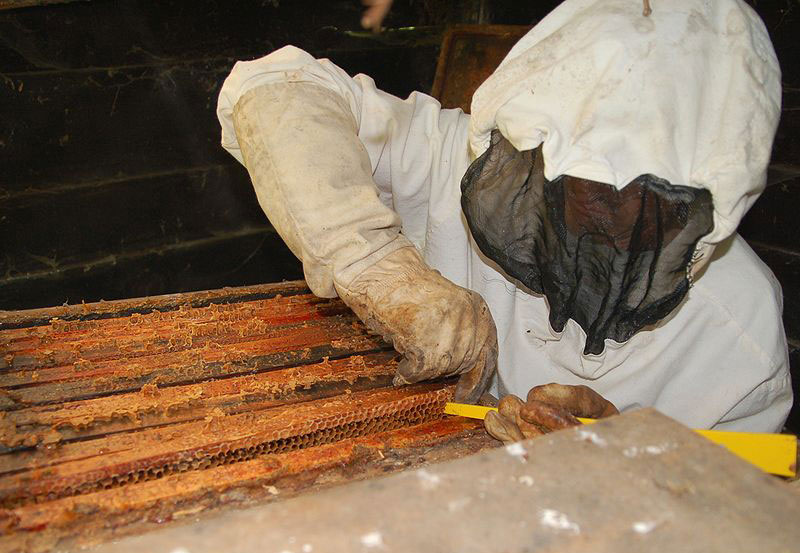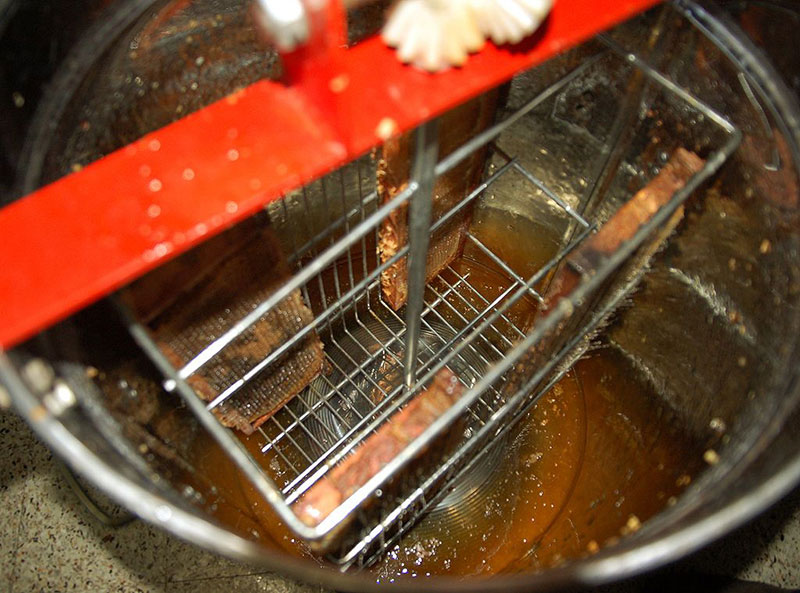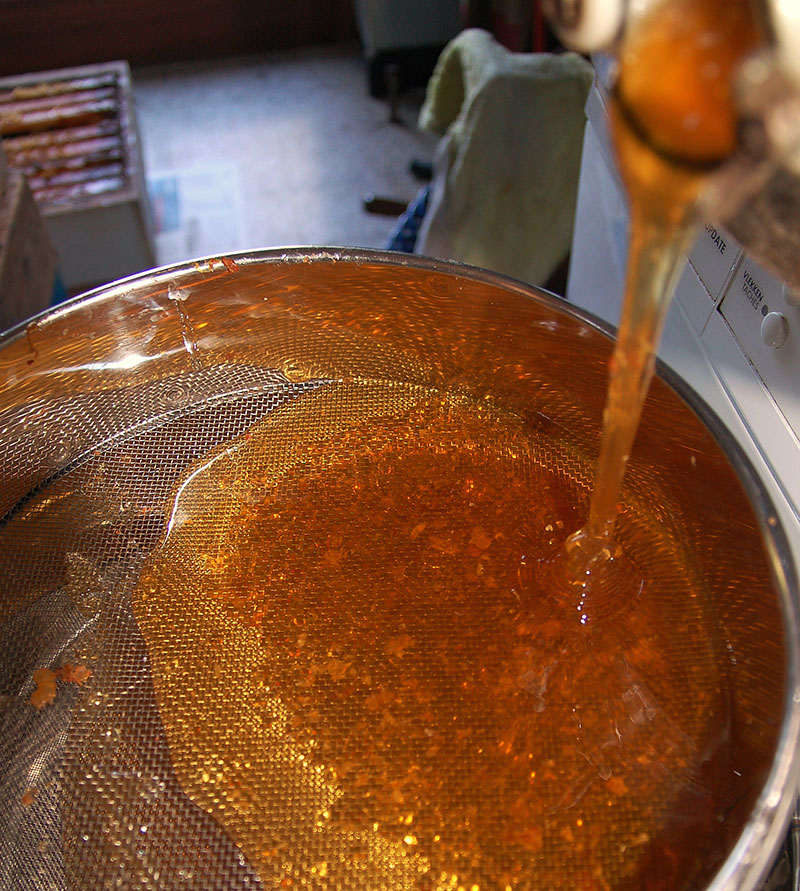
When you know it’s time to harvest honey, not much can hold you back. Before you run out to the beehives and start peeling back the hive tops, though, take some safety precautions and know your plan of action.
First, clad yourself with bee-fortified safety armor—especially if you’re a beginner. At a minimum, don elbow-length gloves and a veiled hat designed for apiculture. You should also consider wearing bee-proof overalls. While it’s a little on the warm side, this apparel protects you and your bees from a rather unpleasant close encounter.

Step 1: Open the Hive
Using a smoker, approach the beehive from behind and puff the smoke around the hive entrance. Remove the top, and smoke the opening to drive the bees lower into the hive. Next, remove the inner cover. You might need to use a mini-crowbar-style hive tool to pry the inner cover loose, as the bees tend to seal it with propolis, a resin-like mixture that bees collect from tree buds and bark when they pollinate.
Step 2: Remove Bees from the Hive

Whether you plan to remove a full super or just a frame, you’ll need to remove any lingering bees from this area. There are several mechanical and chemical methods of removing bees from your supers—ranging from a simple, wide, silky “bee brush” to gas- and electric-powered blowers to bee escapes. You can then pull the bee-free frames out and set them aside in a lidded, empty super until you’re ready to take your honey-laden frames inside for extraction.
Step 3: Uncap the Honey

Once inside, uncap the wax-sealed honeycomb using an uncapping knife, fork or scratcher on both sides of the frame.

Step 4: Extract the Honey

Place the frame into a honey extractor—these come in hand-cranked and electric versions—and spin the frames, forcing the honey to the walls of the drum where they drip to the bottom. The extractor’s drum should have a spigot for releasing the honey.
Step 5: Filter & Bottle Your Honey

Strain the honey through a filter or several layers of cheesecloth to remove any stray bits of wax or other debris. At this point, your honey is ready to bottle. Use clean, sterilized bottles to avoid contaminating your honey product.
Green Isn’t Always Good
Uncapped nectar is known as “green” honey. Green honey has a high moisture content, creating an ideal breeding ground for yeast. As such, this honey is not only unsafe to eat, it also has a gooey consistency and less-than-perfect flavor.
Capped honey has been cleaned and ripened by the bees and is ready to eat. Commercial operations often go a step further and pasteurize their honey. According to Susan Brackney, author of Plan Bee: Everything You Ever Wanted to Know About the Hardest-working Creatures on the Planet, “The sad part of it is honey doesn’t really need to be pasteurized at all, but the companies do it to destroy any lurking yeasts and to increase their honey’s shelf life.”
Aim for Honey Quality Over Quantity
It’s not so much about the amount of honey you harvest as it is about the quality of the honey. You can measure the quality of your honey by the color, flavor and even the bees’ foraging behaviors.
There are more than 300 varieties of honey. Each honey variety is influenced by geographic location, plant life, rainfall, soil condition and harvest times. From the light-golden color of spring’s harvest to the darker, more robust late-summer harvested nectar, honey can be narrowed to individual flower pollens—each type of flower used in the collection process also influences the color and taste of individual batches. The official colors for honey have been set by The National Honey Board:
- water-white
- white
- extra-light amber
- light amber
- amber
- dark amber
These standards can be unofficially measured by eyeballing it, or you can use a digital honey analyzer to precisely measure the amount of light absorbed by each sample of honey to compare to the average readings on the standards list.
Color and flavor are a good reason to monitor your bees’ favorite gathering spots, but they aren’t the only ones. Some flowers can actually infuse the honey with toxic qualities. Rhododendron ponticum, a specific variety of rhododendron that grows in Turkey’s mountain region, contains a naturally occurring toxin in its nectar that can lead to nausea, dizziness, convulsions, heart palpitations and other serious side effects. Honey containing this toxin, grayanotoxin, became known as “mad” honey because of the sickening effects it inflicts.




